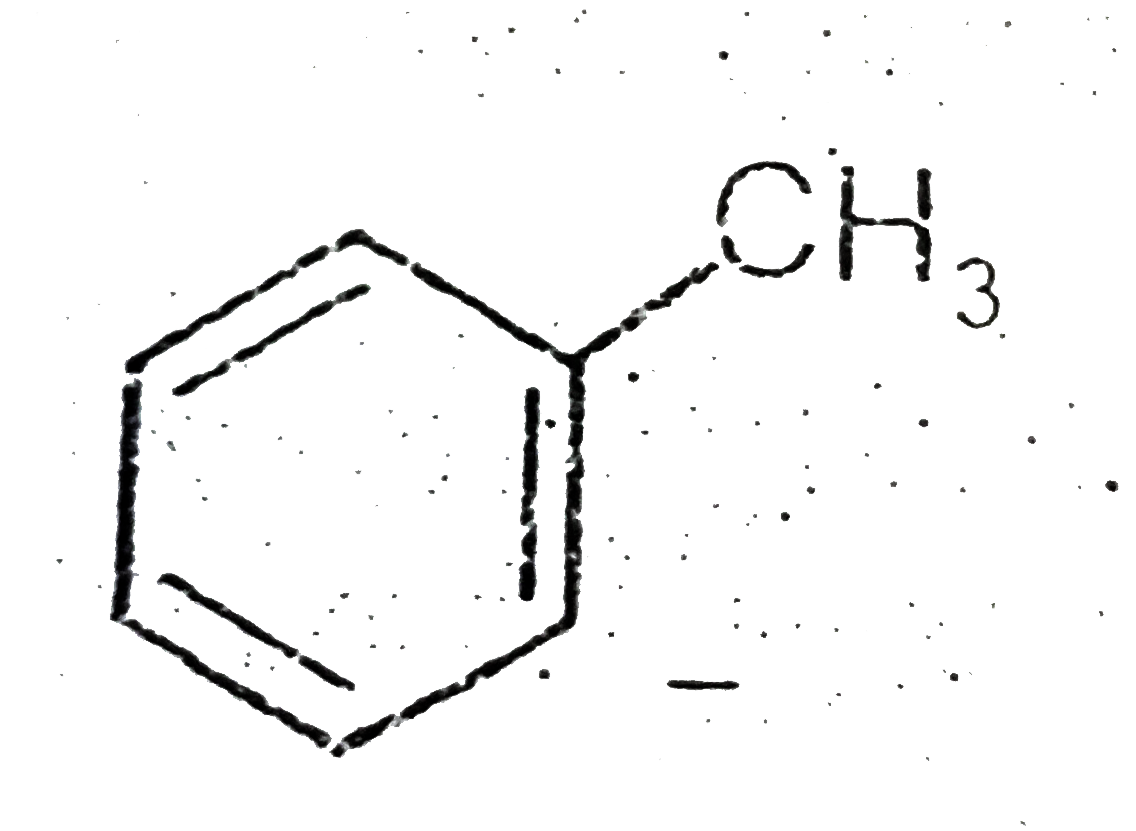In which of the following all electronic effects namely inductive, mesomeric and hyperconjugative effects are present?




The correct Answer is:D
To determine which of the given options contains all three electronic effects—inductive, mesomeric, and hyperconjugative effects—let's analyze each option step by step.
Step 1: Understand the Electronic Effects
1. Inductive Effect (−I or +I): This is the permanent effect due to the electronegativity difference between atoms. Electronegative atoms withdraw electrons (−I effect), while alkyl groups donate electrons (+I effect).
2. Mesomeric Effect (Resonance): This effect arises from the delocalization of π electrons across adjacent atoms or groups, leading to resonance structures.
3. Hyperconjugative Effect: This involves the interaction of σ bonds (usually C-H) with adjacent empty or partially filled p-orbitals or π bonds, leading to stabilization.
Step 2: Analyze Each Option
- Option A:
- No delocalization of electrons is possible.
- No mesomeric effect.
- No hyperconjugation (no α-hydrogens).
- No inductive effect (no electronegative atoms).
- Conclusion: Does not exhibit any of the three effects.
- Option B:
- No delocalization of electrons is possible.
- No mesomeric effect.
- No hyperconjugation (no α-hydrogens).
- Inductive effect present due to the presence of electronegative oxygen (−I effect) and CH₃ groups (+I effect).
- Conclusion: Lacks mesomeric and hyperconjugative effects.
- Option C:
- No delocalization of electrons is possible.
- No mesomeric effect.
- No hyperconjugation (no α-hydrogens).
- Inductive effect present due to the presence of electronegative oxygen (−I effect).
- Conclusion: Lacks mesomeric and hyperconjugative effects.
- Option D:
- Hyperconjugation is possible due to the presence of α-hydrogens adjacent to a double bond.
- Mesomeric effect is present as electrons can delocalize across the structure.
- Inductive effect is present due to the presence of CH₃ groups (which are +I) and any electronegative atoms.
- Conclusion: Exhibits all three effects.
Final Answer
The correct answer is Option D, as it contains all three electronic effects: inductive, mesomeric, and hyperconjugative.
1. Inductive Effect (−I or +I): This is the permanent effect due to the electronegativity difference between atoms. Electronegative atoms withdraw electrons (−I effect), while alkyl groups donate electrons (+I effect).
2. Mesomeric Effect (Resonance): This effect arises from the delocalization of π electrons across adjacent atoms or groups, leading to resonance structures.
3. Hyperconjugative Effect: This involves the interaction of σ bonds (usually C-H) with adjacent empty or partially filled p-orbitals or π bonds, leading to stabilization.
- Option A:
- No delocalization of electrons is possible.
- No mesomeric effect.
- No hyperconjugation (no α-hydrogens).
- No inductive effect (no electronegative atoms).
- Conclusion: Does not exhibit any of the three effects.
- No delocalization of electrons is possible.
- No mesomeric effect.
- No hyperconjugation (no α-hydrogens).
- Inductive effect present due to the presence of electronegative oxygen (−I effect) and CH₃ groups (+I effect).
- Conclusion: Lacks mesomeric and hyperconjugative effects.
- No delocalization of electrons is possible.
- No mesomeric effect.
- No hyperconjugation (no α-hydrogens).
- Inductive effect present due to the presence of electronegative oxygen (−I effect).
- Conclusion: Lacks mesomeric and hyperconjugative effects.
- Hyperconjugation is possible due to the presence of α-hydrogens adjacent to a double bond.
- Mesomeric effect is present as electrons can delocalize across the structure.
- Inductive effect is present due to the presence of CH₃ groups (which are +I) and any electronegative atoms.
- Conclusion: Exhibits all three effects.
The correct answer is Option D, as it contains all three electronic effects: inductive, mesomeric, and hyperconjugative.
Topper's Solved these Questions
- ORGANIC CHEMISTRY: SOME BASIC PRINCIPLE AND TECHNIQUESBOOK - AAKASH INSTITUTE ENGLISHCHAPTER - ORGANIC CHEMISTRY: SOME BASIC PRINCIPLE AND TECHNIQUESEXERCISE - SECTION-C OBJECTIVE TYPE QUESTION (MORE THAN ONE OPTIONS ARE CORRECT)
18 Videos
- ORGANIC CHEMISTRY: SOME BASIC PRINCIPLE AND TECHNIQUESBOOK - AAKASH INSTITUTE ENGLISHCHAPTER - ORGANIC CHEMISTRY: SOME BASIC PRINCIPLE AND TECHNIQUESEXERCISE - SECTION-D LINKED COMPREHENSION TYPE QUESTIONS
7 Videos
- ORGANIC CHEMISTRY: SOME BASIC PRINCIPLE AND TECHNIQUESBOOK - AAKASH INSTITUTE ENGLISHCHAPTER - ORGANIC CHEMISTRY: SOME BASIC PRINCIPLE AND TECHNIQUESEXERCISE - ASSIGNMENT SECTION-A COMPETITION LEVEL QUESTIONS
50 Videos
- ORGANIC CHEMISTRY : SOME BASIC PRINCIPLES AND TECHNIQUES BOOK - AAKASH INSTITUTE ENGLISHCHAPTER - ORGANIC CHEMISTRY : SOME BASIC PRINCIPLES AND TECHNIQUES EXERCISE - Assignment(Section-D)(Assertion - Reason Type Questions)
15 Videos
- POLYMERSBOOK - AAKASH INSTITUTE ENGLISHCHAPTER - POLYMERSEXERCISE - ASSIGNMENT (SECTION-D)
13 Videos
Similar Questions
Knowledge Check
In which of the following molecules all the effects namely inductive, mesomeric and hyperconjugation operate?
A B
B C
C D
D
Which of the following exhibit electromeric effect ?
AAlkanesBAldehydesCAlkyl halidesDAlkyl aminesWhich of the following will show Tyndall effect?
AAqueous solution of soap below critical micelle concentrationBAqueous solution of soap above critical micelle concentrationCAqueous solution of sodium chlorideDAqueous solution of sugar
In which of the following Tyndall effect is not observed
View SolutionWhich of the following explains Haldane effect?
View SolutionWhich of the following are based on Tyndall effect?
View SolutionWhich of the following is not a turning effect of force?
View SolutionWhich of the following is not a sympathetic effect?
View Solution
